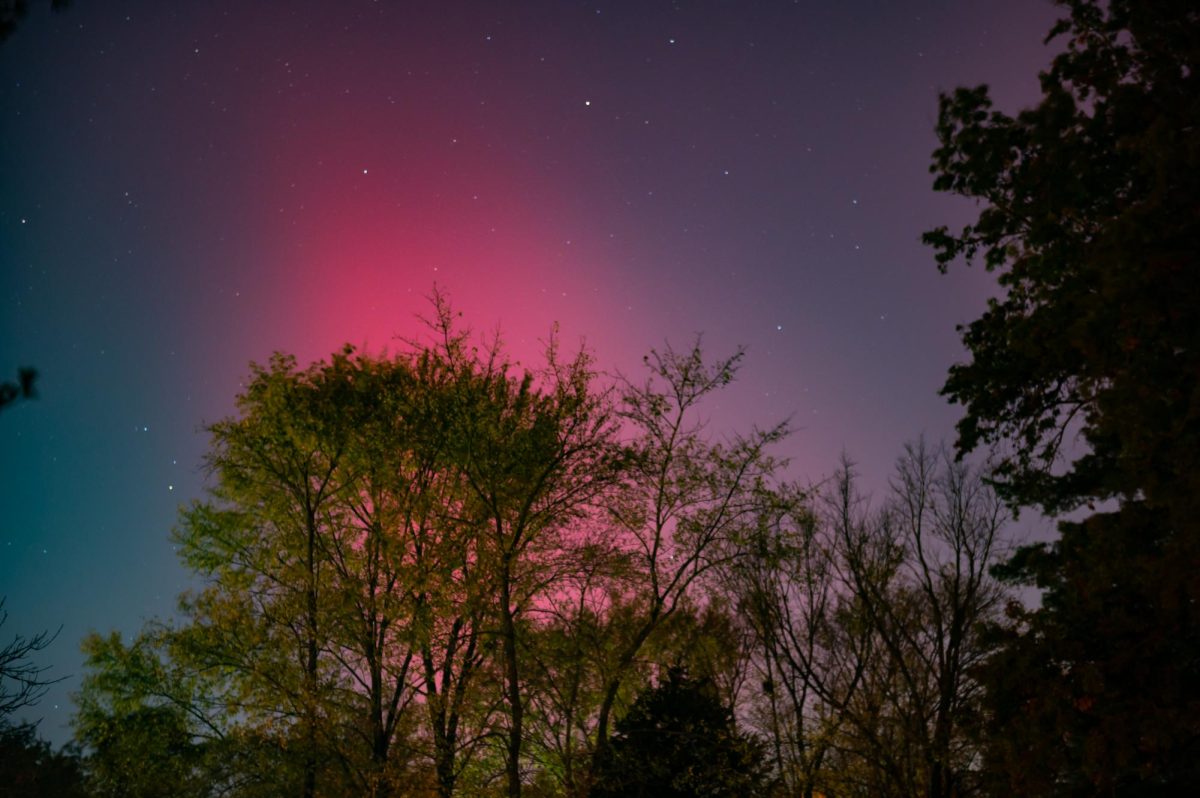One week ago, NASA announced that their Kepler satellite had found two habitable worlds outside of Earth’s constellation–more than 1,200 light years away. Â The satellite, launched in 2009, has a goal of examining stars to discover a planet resembling Earth. Â So far, it has examined more than 150,000 stars.
“With all of these discoveries we’re finding, Earth is looking less and less like a special place and more like there’s Earth-like things everywhere,” Thomas Barclay, a scientist working on the Kepler satellite, said.
The two planets are the smallest planets ever found in the “habitable zone,” the area near a star in which a planet can theoretically hold water.
“There could definitely be life on the planets! Â I mean, how many other stars exist out there? Â There must be some other life out there,” senior Rowan Hamilton, a student in Colleen O’Toole’s Astronomy class, said.
Although many would like to explore these planets, we won’t be landing on them anytime soon–the planets are an estimated 1,200 light years away (a single light year is about 6 trillion miles away).
“Though it’s possible that the planets could hold life, it’s not likely. Â The temperatures on these planets are often extreme–up to 4,000 degrees. Â Humans definitely couldn’t live there,” junior Brittany Thompson, another student in O’Toole’s Astronomy class, said.
Fascinating as it is, the planets will most likely remain a mystery for our lifetime, and we will probably never be able to visit them. Â Instead, NASA is shifting its sights, creating the possibility of landing on unknown planet sometime soon.
“Future NASA missions are going to focus on more nearby stars that we can look at in much more detail,” Barclay said.

![Gazing up from the stage, junior Joseph McCurdy who played Peter Pan in the school play, Lost Girl, sits next to senior Juliana Rogers, who plays Wendy Darling, during a theater rehearsal. McCurdy’s passion for theater began when he observed a West High production in middle school. “I've been in the high school theater program since I was a freshman. I've always loved theater, but [what prompted me to join] was [when] I went to see [a performance here] when I was in middle school, and it was super cool,” McCurdy said.](https://pwestpathfinder.com/wp-content/uploads/2025/11/IMG_6535-1200x798.jpeg)

![Standing tall, stacked in a precise formation, the cheer team strikes a signature pose during halftime on Sept. 12 at the varsity football game. Nearly a month after this performance, the cheer team performed at the Missouri Cheerleading Coaches Association (MCCA) regional competition on Oct. 4, 2025. “We've all come [to] work together a lot more,” sophomore Elyssa Philippi said. “We're a lot closer than we were [earlier in the season] and going to state has made us closer [in] trying to work with each other, learn [new] skills and make our team better.”](https://pwestpathfinder.com/wp-content/uploads/2025/11/DSC5139-1.jpg)
![Handing out candy to excited trunk-or-treaters, President of the United Nations Children’s Fund club and junior Sara Ashok represents that group. Ashok was eager to participate in this event for multiple reasons. “I really wanted to be a part of the event because I get to help create memories for kids and spend time with my friends, spreading the things [I'm passionate about],” Ashok said.](https://pwestpathfinder.com/wp-content/uploads/2025/11/DSC_8648-1-1200x800.jpg)

![Smiling in a sea of Longhorns, Fox 2 reporter Ty Hawkins joins junior Darren Young during the morning Oct. 3 pep rally. The last time West was featured in this segment was 2011. “[I hope people see this and think] if you come to [Parkway] West, you will have the time of your life because there are so many fun activities to do that make it feel like you belong here. I was surprised so many people attended, but it was a lot of fun,” Young said.](https://pwestpathfinder.com/wp-content/uploads/2025/10/Edited2-1200x798.jpg)
![West High seniors and families listen as a representative of The Scholarship Foundation of St. Louis, Teresa Steinkamp, leads a Free Application for Federal Student Aid (FAFSA) workshop. This session, held in the library, provided guidance on financial aid, scholarships and student loan options. “This event is very beneficial for any seniors who are applying to or considering applying to colleges after high school [because] the cost of college is on the rise for seniors and parents,” college and career counselor Chris Lorenz said.](https://pwestpathfinder.com/wp-content/uploads/2025/09/DSC_4478-1200x778.jpg)
![Senior Kamori Berry walks across the field during halftime at the Homecoming football game on Sept. 12. During the pep assembly earlier that day, she was pronounced Homecoming Queen. “I thought it was nice that the crowd [started] cheering right away. I know [my friends] were really excited for me, and my family was happy because typically non-white people don't win,” Berry said.](https://pwestpathfinder.com/wp-content/uploads/2025/09/DSC7046-Enhanced-NR-1200x798.jpg)

